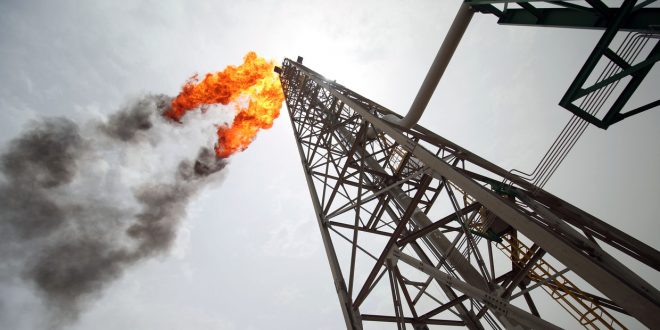Iraq, the world’s second-worst gas flarer, could generate over 3.5 GW of power by capturing 40% of associated gas that is currently burned, a GE executive said Sept. 20.
“In Iraq, if we capture 30% to 40% of the gas flaring that is being done, we can deliver over 3.5 GW of power that otherwise wouldn’t be there with the resources available in the country,” Joe Anis, CEO for the Middle East, North Africa & South Asia at GE Gas Power, told the Powering Iraq virtual conference.
OPEC’s second largest oil producer burned some 18 Bcm (632 Bcf) of gas in 2019, the most of any country except Russia, according to a World Bank study published July 21. Flaring deprives countries of the economic benefits that would come if the gas associated with pumping oil was processed and sold to market, rather than burned into the air.
Iraq imports Iranian gas and electricity to feed its power needs, but it is under increasing US pressure to lower its dependence on Tehran’s energy supplies, which have been under US sanctions since 2018.
Iraq is currently receiving US waivers to import Iranian gas and electricity, but the US has said they are temporary.
Investment reforms
Iraq needs to implement reforms to attract investments needed to utilize its gas resources, Fatih Birol, the executive director of the International Energy Agency, told Powering Iraq.
“Iraq has a huge amount of natural gas resources and these natural gas resources can help to power the entire of Iraq and can help to flourish the many industries which will be very helpful for the economic growth of Iraqi economy,” he said. “For this, what we need is investments and for investments we need reforms.”
Iraq faces a host of problems to boost its power supply. Gas is currently produced with crude, which is subject to OPEC+ quotas. Iraq has struggled to adhere to its OPEC+ production limits, especially in summer months when power shortages are most acute as temperatures can soar to over 50 C in the south.
Saving billions
Iraq, which currently produces around 18 GW of electricity, needs some 30 GW in 2020, according to Mahmoud Hanafy, senior vice president for transmission at Siemens Energy. Siemens in 2018 signed a memorandum of understanding with the ministry of electricity outlining a roadmap to add 11 GW of power generation capacity over four years.
Power demand in Iraq is growing as much as 9% per year, requiring the annual addition of around 1.5 GW of electricity, according to Harry Istepanian, an independent water and power expert.
Iraq’s power sector also is grappling with transmission losses estimated at between 40% to 60%, according to speakers at Powering Iraq.
“A 5% reduction in (transmission) losses will save around $40 billion a year for the Iraqi government,” Hanafy said.

 Iran Energy News Oil, Gas, Petrochemical and Energy Field Specialized Channel
Iran Energy News Oil, Gas, Petrochemical and Energy Field Specialized Channel



